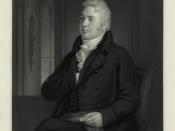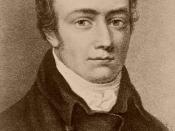Romanticism
Romanticism began in the mid?18th century and reached its height in the 19th century. It was limited to Europe and America although different compatriots donated to its birth and popularity. Romanticism as a movement declined in the late 19th century and early 20th century with the growing dominance of Realism in the arts and the rapid advancement of science and technology. However, Romanticism was very impressionative on most individuals during its time. This was because it was expressed in three main aspects of life: literature, art, and music.
In literature, Romanticism was to some extent a reaction against the strict rules formulated by the Neoclassicists. The first fully Romantic poetry was Lyrical Ballads (1798) by William Wordsworth and Samuel Taylor Coleridge. Wordsworth?s The World is Too Much With Us (1802) emphasizes a world being plagued by materialism while steadily losing its spirituality. He used Greek mythological figures to symbolize that the nature the ancients enjoyed could not be destroyed by the Industrial Age.
John Keats? La Bell Dame Sans Merci (1819) is another notable example of Romanticism in literature. Keats portrayed this work through mysticism, death, and the emotional nature of human beings. Wordsworth, Coleridge, and Keats described nature in an exclusive way because landscape was the main principal in their works. ?Mind of Man," as Wordsworth observed, was a poets? response to the natural scenes that inspired their thinking. Despite all of this, nature commonly was the focus of Romantic painters.
Romantic painters rebelled against the objectivity and composure of the prevailing Neoclassic style. The art is colorful, expressive, and full of movement. John Constable?s Wivenhoe Park, Essex (1816), is a pristine example of his scientific approach to capturing the qualities of atmosphere, light, and sky. Constable used God in nature, creativity, and the peaceful aspects of...



Romanticism
Quite good. It could've been even better if you had lengthened it. Your grammar is excellent and there is a lot of imformation. Keep it up!
3 out of 3 people found this comment useful.